A Chef Reveals Why Salads Always Taste Better At A Restaurant Vs At Home
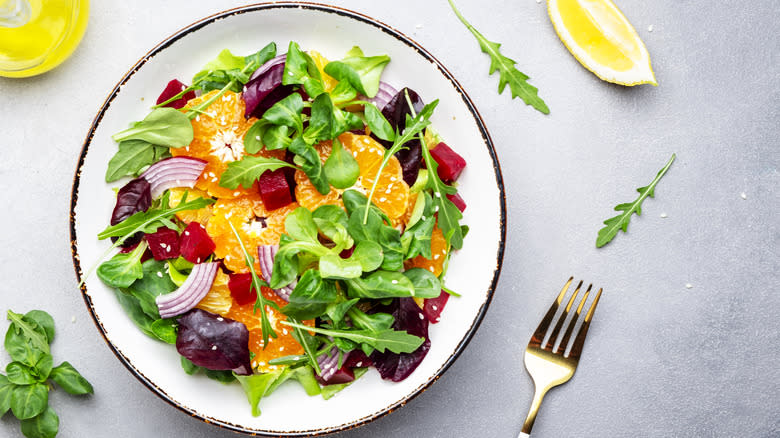
Many of us struggle to consume the recommended amount of five portions of fruits and vegetables every day. One way to get more of these necessary foods is in the form of a salad, with virtually endless recipes to use, that can accommodate people with vastly different tastes. And, while many of these can easily be prepared at home, salad often seems to taste better when eaten at a restaurant.
Even when you follow all the advice, there are a number of basic mistakes to avoid making when assembling salads. Even if you try using tricks to enhance it, your homemade salad may taste subpar compared with those you've eaten at a restaurant. Believe it or not, there are a few simple reasons for this that may be instructive in helping you build a better salad. Some have everything to do with the unique skills and equipment restaurants are furnished with, that give them more flexibility to be creative and innovative. As a chef with nearly 18 years of professional experience, I have some insight into the why's and how's of restaurant salad assembly that I'll share with you here.
Read more: 12 Vegetables And Fruits That Used To Look Very Different
Restaurants Have Access To Diverse Types Of Lettuce
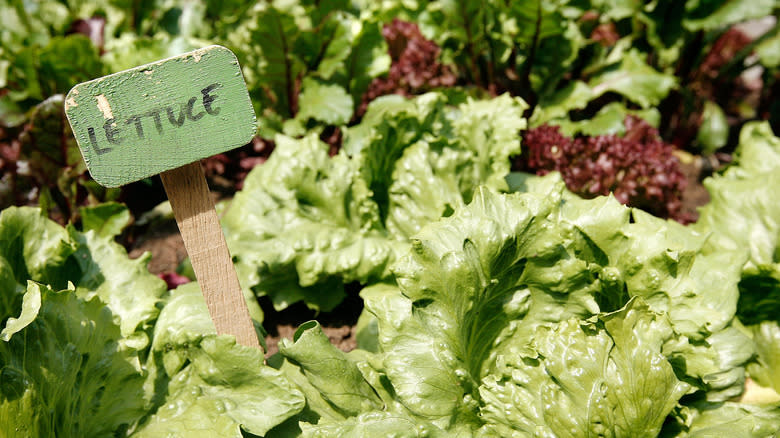
Many restaurants have direct access to local farms to obtain diverse kinds of lettuce that have been freshly harvested. Others use food distributors that are capable of obtaining quality produce in bulk from multiple farms and delivering it regularly. Some have even gone to the trouble of building greenhouses or gardens, either on restaurant rooftops or in fancy, climate-controlled growing rooms, that they can harvest daily.
The importance of this diverse and fresh selection of greens cannot be understated. Not only is consuming a wide range of different salad greens good for you, but unique varieties of lettuce create more complexity in flavor, texture, and visual appeal in a salad, that can produce a more satisfying dining experience. While restaurants certainly use standard options, like iceberg and romaine lettuce, they often experiment with more exotic choices too, ranging from bitter greens to heirloom varieties grown in small batches. Some of my personal favorites to use are claytonia (also known as miner's lettuce), arugula, mizuna, and accents of microgreens like radish, beet, and cress.
While being able to source these greens is important, it's even more necessary to understand how to use them to maximize their flavor and texture. For instance, tougher greens may benefit from a light massage before being dressed, while bitter greens will require a hint of sweetness to balance out their intense taste.
Restaurants Properly Clean And Dry Ingredients
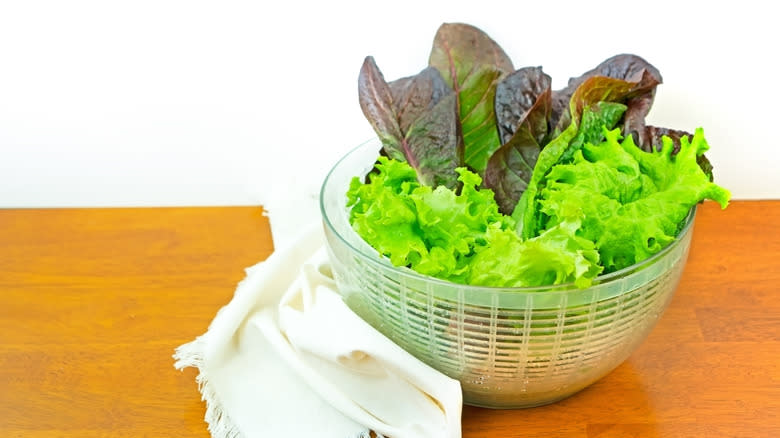
Many home chefs don't take the time to adequately clean or dry their fruit and vegetables, easily resulting in gritty produce and soggy salad. The best way to wash vegetables, particularly greens, is to soak them in cold water for a few minutes. This will help remove residual dirt, which will sink to the bottom of the bowl. I often repeat this process until the water is no longer cloudy, and no dirt remains at the bottom.
Alternatively, a salad spinner may be used for both washing and drying, saving both time and effort. Simply insert the basket into the spinner, gently layer the vegetables into it without overcrowding them, and fill the spinner with cold water. Once the vegetables have soaked, pull the basket out, drain the water, rinse the spinner out, and dry the greens. Again, you can repeat this as necessary, until the water is no longer murky.
While there are a number of ways to store fresh vegetables, particularly greens, for later use, it's important to do so carefully. I always place lettuce in a plastic bag or airtight container lined with a paper towel. The paper towel will help wick moisture away from the greens, preventing them from getting slimy, while the plastic bag or airtight container will keep oxygen away from them, further lengthening their shelf-life.
Restaurants Keep The Ingredients Cold
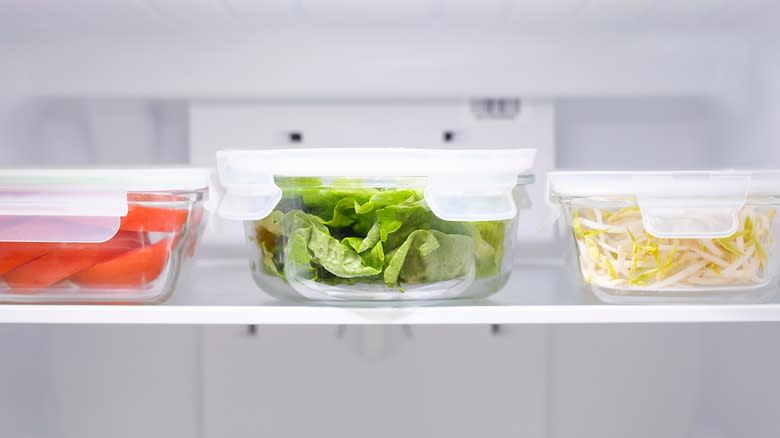
Another key to a perfectly crisp salad that will perk up your taste buds, and give your jaws a bit of a workout, that restaurants are well aware of, is to keep the ingredients cold. Once they're cleaned and placed in a plastic bag or airtight container with paper towels, chefs toss their salad greens in the freezer for a couple of minutes to really firm them up, before dressing them. This helps remove any remaining moisture from the greens, allowing the dressing to adhere without gliding off of the leaves. The key is not overdoing it, as greens are notoriously delicate, and the cellular structure of their leaves can easily be damaged if ice crystals begin to form within them.
Additionally, other crunchy vegetables, like carrots, radishes, and celery, will be placed in an ice water bath for a short stint, anywhere from 30 minutes to an hour, depending on the density of the produce, before it's destined for use in a salad. Soaking fibrous vegetables in an ice water bath helps to revive them and gives them a more pleasant mouthfeel. Again, these are thoroughly dried before they're chopped and added to a salad, so as to ensure the dressing sticks to the vegetables well and the whole dish doesn't become watery.
Restaurants Make Their Own Salad Dressing
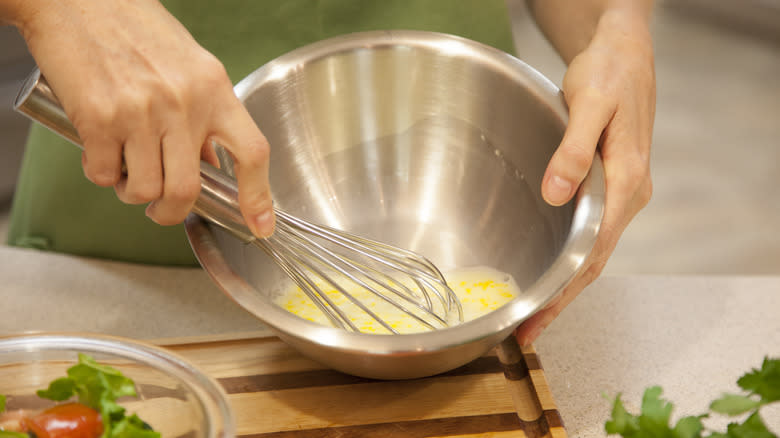
Restaurants have another trick up their sleeves that can make or break a salad — they make their own dressing, from scratch. Many of us cannot be bothered to go to that much effort at home, relying on store-bought brands that can be loaded with unidentifiable ingredients, contain tons of sodium, and have bland flavor. Though there are ways to brighten up store-bought dressing to give it a more homemade taste, making it from scratch is infinitely preferable, if you want to achieve that fine dining quality.
Restaurant chefs know the best ways to elevate salad dressing to new heights and all the mistakes to avoid, to create the perfect vinaigrette. They also have access to the highest-end ingredients, from quality oil and flavored-vinegar to fancy mustard and bold-tasting finishing salts. This makes a huge difference to the end result. Lastly, because they have a lot of turnaround, restaurants can make dressing in bulk and can create several different flavors at a time, catering to a variety of tastes and accommodating the needs of all of their dining guests.
Restaurants Pre-Season The Greens
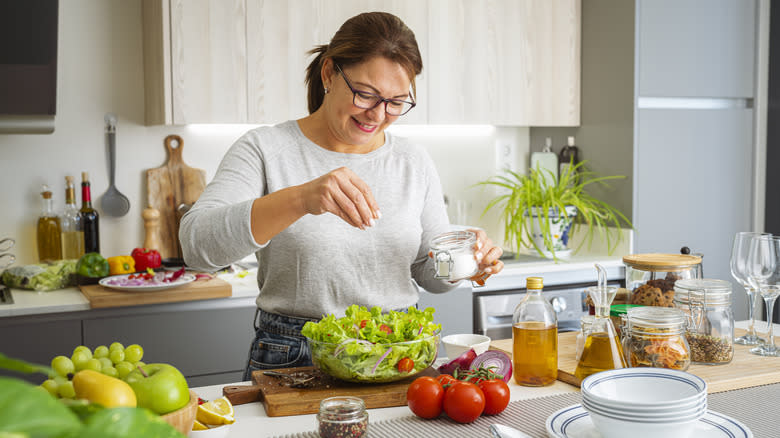
The idea of pre-seasoning your greens before you dress them may seem unnecessary, excessive, or illogical. After all, if you properly season your salad dressing, shouldn't that be enough to confer delicious flavor to your salad? Not exactly, and this is something chefs know and take advantage of at their restaurants.
Indeed, this technique is not without precedent. In fact, the etymology of the word "salad" stems from the Latin word for salt, or "sal," which is all you need to properly pre-season your lettuce for a salad. No fancy spice blends or seasoning mixes are required. Just a hint of salt will temper the bitterness of greens, enhancing every other flavor that may hit your taste buds, including sweet, spicy, sour, and umami ones. And when pre-salted, certain fruits and vegetables like cucumbers and tomatoes, may benefit as this eliminates excess moisture that can make a salad soggy.
When it comes to what kind of salt is used to pre-season the greens or other fruits and vegetables, I tend to avoid regular table salt. Kosher salt is a common commercial kitchen staple, and is used for all kinds of culinary applications. However, I also get creative by using various sea salts and finishing salts, such as Himalayan pink or smoked varieties. These further enhance the flavor and texture of the final assembled salad.
Restaurants Don't Shy Away From Fat
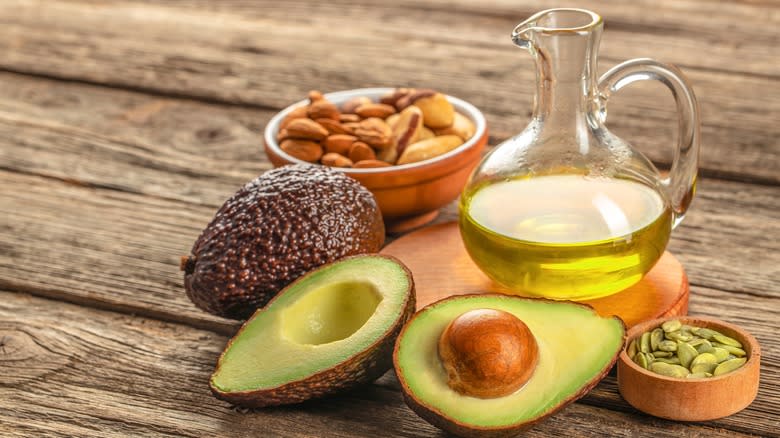
While there is some evidence to suggest that many nutrients provided by salad are more bioavailable when consumed with adequate amounts of fat, this is not what restaurants are using it for. You may have heard the adage "fat equals flavor," and there may be some evidence to suggest this is true. A research study, published in Chemical Senses in 2015, found that in addition to sweet, salt, bitter, sour, and umami, our taste buds may have another receptor capable of detecting fat, known as oleogustus. Though there is still research to be done on this purported sixth taste, this isn't the reason we crave fat. A host of interrelated sensations send signals to our brains indicating something is fatty, and therefore yummy.
Chefs understand the interactions between all of our tastes and senses, and how these can either enhance or detract from an ingredient. With experience, they can use different types of fat to achieve different results, further influencing the final experience of the dish. And, lest you think the only place fat plays a key role in salads is in the preparation of the dressing, this couldn't be farther from the truth. Fat makes an appearance in many forms, from meats and nuts to avocados and cheese. When you order from a restaurant, the chef has taken all of these factors into account, assembling a salad with the ideal amount of fat.
Restaurants Toss The Greens In Dressing By Hand
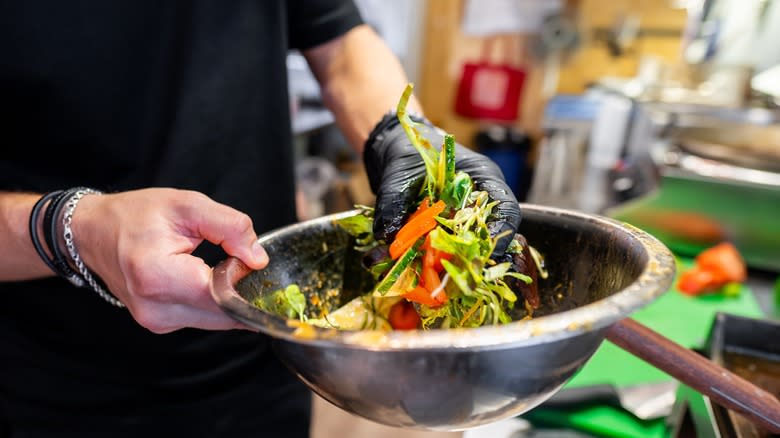
It may seem convenient to put salad ingredients into a serving bowl and dump dressing straight over them, but this technique is a surefire way to over or underdress your salad and guarantee that the ingredients aren't evenly coated. Restaurants use a simple method for evenly dressing a salad every time — they toss the ingredients in a large mixing bowl before transferring them to the serving bowls.
The trick is to always choose a larger mixing bowl than you think you need. You want plenty of space for the ingredients to be tossed without getting compressed, which can damage the greens. While restaurants typically use stainless mixing bowls for this process, this is not necessary at home. That said, I encourage you to avoid plastic ones, as they can leave an unpleasant aftertaste on the salad.
Lastly, it may seem useful to employ a handy set of tongs for this process, but no matter how adept you are at wielding them, they will not be your best tool for evenly tossing a salad. Indeed, the best tool for this process is using your clean hands. Your fingers are capable of sensing how evenly the ingredients are coated with the dressing and can handle more delicate components without piercing or tearing them. Always wash your hands in hot water for 20 seconds, with plenty of soap, and dry them with a clean towel before handling your greens.
Restaurants Don't Drown The Greens In Dressing
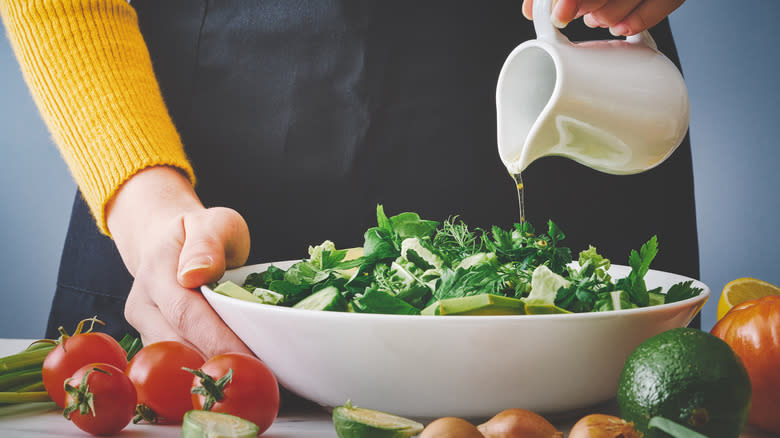
If there's one thing that irks me more than anything when it comes to salads, it is being delivered a bowl of dressing soup, with some wilted greens and limp vegetables swimming in it. Though this can occur at a restaurant, most restaurants know better than to drown their salad ingredients, paying careful attention to how much dressing they add, to avoid this. While there's a basic ratio you can follow to guarantee appropriate coverage for your salad, this will vary depending on what greens and other ingredients you're using, making it an inexact science. For this reason, I tend to use a more incremental approach to dressing my salads, adding a little at a time as I toss the greens by hand to determine if they're adequately and evenly coated.
As for what type of greens you're using, some are well-suited to vinaigrettes, while others are ideal for heavier, creamy dressings like Caesar or blue cheese. A good rule of thumb is to reserve delicate greens for vinaigrettes, and to use more robust types of lettuce, like iceberg or romaine, for heavier dressings.
Restaurants Chill The Serving Bowls
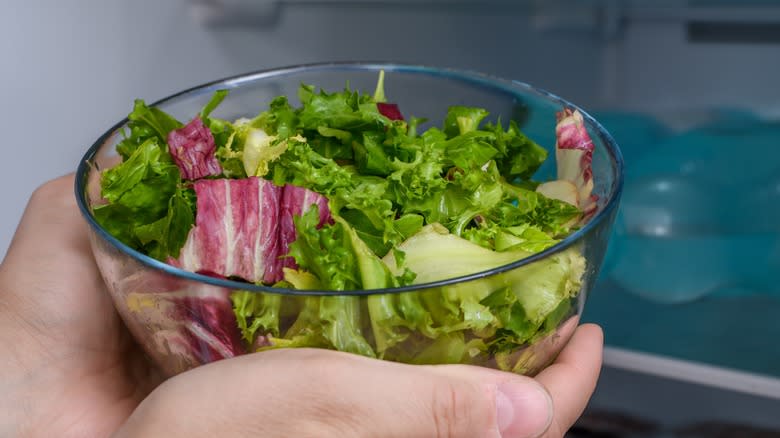
Lest you think the process of assembling and dressing a salad is all that's involved in the perfect restaurant-quality salad, there's another detail. Serving the salad is as important as making it, particularly when it comes to the bowl you use. The shape and material of the bowl may not matter as much, though wider, flatter salad bowls are preferable, as they allow the ingredients to spread out, without weighing each other down.
More importantly, the bowl should be chilled in the refrigerator before you serve your salad. This will prevent the salad from wilting as you eat it, acting like a built-in insulator against the elements and your hands, as you grab the bowl. I usually leave the bowls in the refrigerator for at least 30 minutes before adding the assembled salad to them. The one exception to this rule may be if you plan to serve your salad in a crispy pita bowl or tortilla shell. I will note, however, that it is advisable to cool these to room temperature before you add the assembled salad, otherwise the residual heat from them will cause your salad to become soggy.
Restaurant Chefs Get Creative With Varied Ingredients
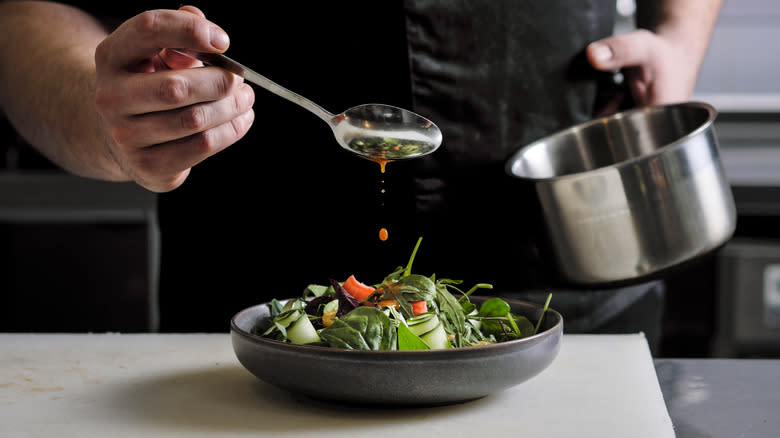
Chefs have certain culinary spidey senses that enable them to layer ingredients in a salad expertly. The key is understanding the basic characteristics of each ingredient and being able to creatively put them together in ways that are both surprising, and logical, to our taste buds and our five senses.
Often mother nature provides the inspiration for us, with certain ingredients growing simultaneously, that will beautifully complement one another. Other times, seemingly contradictory ingredients can be combined, that magically work together through some culinary sorcery. This was where I really enjoy flexing my creative juices. As a chef, I view the plate as a blank canvas for the ingredients, which are my figurative paints.
While we certainly eat with our eyes and nose first, one of the most important factors in how well ingredients of a salad come together, beyond the harmonious balance of flavors, is the juxtaposition of textures they create. I try to search for elements that are creamy, crunchy, and chewy, which give our mouths and brains a chance to really absorb the flavors with each bite.
Restaurants Have Specialty Equipment
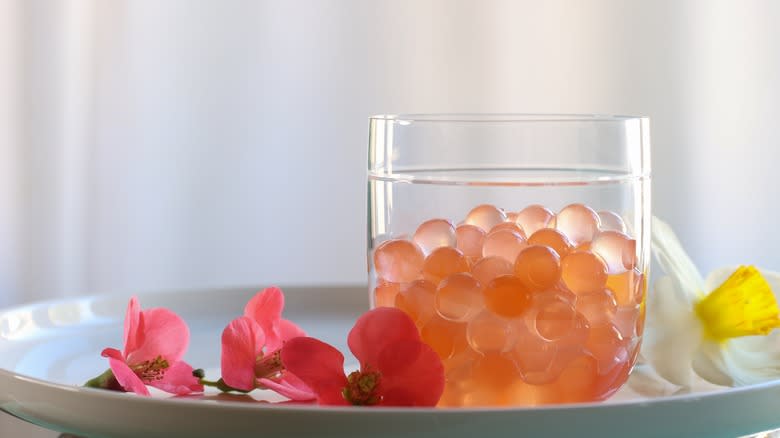
Not only do many restaurants have separate salad bars and prep areas with cooling equipment designed to keep ingredients at the ideal temperature, they have unique devices to play with ingredients in ways we can't at home. Some also have the know-how to transform ingredients, using techniques that fall under the umbrella of molecular gastronomy.
Believe it or not, lettuce, particularly heartier varieties, can be smoked, completely transforming its flavor, texture, and aroma. This gives salads a deep and distinctive earthiness. While lettuce is not particularly amenable to being cooked in a sous vide unit, other more dense vegetables, like radishes and carrots, can be marinated and softened, transforming them completely.
The art of molecular gastronomy may or may not be your cup of tea, but in terms of culinary theater, it can be highly entertaining, and often delicious. Though smoking and sous vide can be considered molecular gastronomy techniques, some of the more obscure and fascinating techniques include spherification, gelification, and the use of edible paper. All of these can take something, like a beet, and turn it into several forms, from mock pearls to a facsimile of jello.
Restaurants Aren't Afraid Of Heat
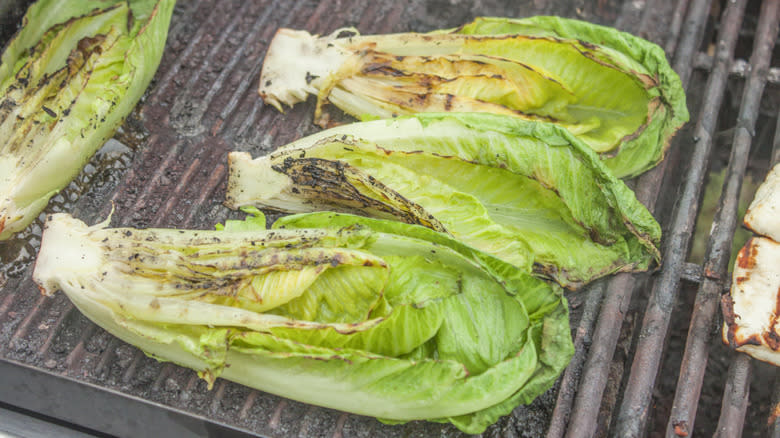
Warm dressings are always popular in the autumn and winter, when the weather begins to turn cold. And when it comes to denser greens, like kale, a warm dressing may actually help make it more palatable by taming excessive bitterness and softening tough leaves. Warm dressings aren't the only way to apply heat to a salad, however. In fact, grilling or roasting greens to obtain a nice char is a great way of transforming their flavor and texture.
My favorite greens for this purpose are romaine, endive, radicchio, and other hearty lettuce varieties. Because of the charring process, the greens will develop a smoky flavor that accentuates the natural bitterness of the lettuce. This can easily be tempered with some bright acidity, like a citrusy dressing, a hint of sweetness, like a drizzle of maple syrup or honey, and a creamy component, like some luscious gorgonzola or chèvre. If you want to add a boost of umami flavor, toss on some crispy bacon or toasted nuts.
Restaurants Pay Attention To Plating
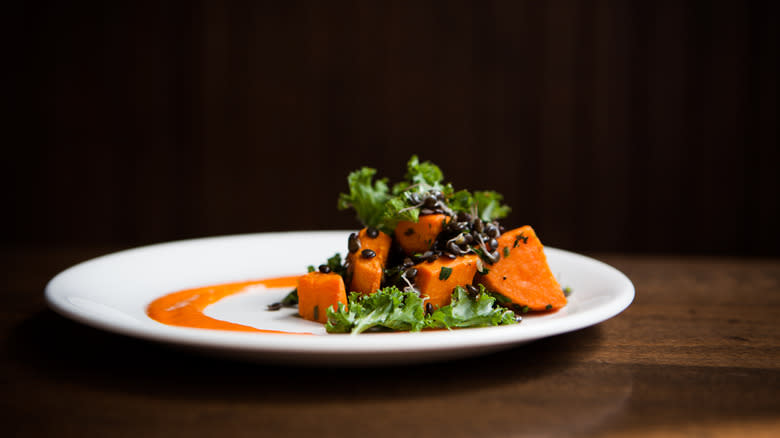
Restaurants know that the moment they set a plate on the table, there has to be a "wow" factor. They take great pains to look at elements, like the colors of ingredients, different textures, and even distribution of components, that will help them produce an eye-popping salad.
One key to a beautiful plate is to not overload your salad with too many ingredients. Not only does this weigh the salad down and over complicate the flavors, it makes for an overcrowded plate that looks sloppy. Balance is everything, and chefs know this well, opting for fewer, carefully selected ingredients. "Less is more" is definitely a good rule to follow when it comes to plating salads.
Lastly, consider taking advantage of tools like graters, mandoline slicers, and vegetable peelers, to transform your vegetables and fruits into different shapes and textures. This will not only create visual interest, but it helps to amplify the juxtaposition of different consistencies that enhance overall mouthfeel.
Read the original article on The Daily Meal.


